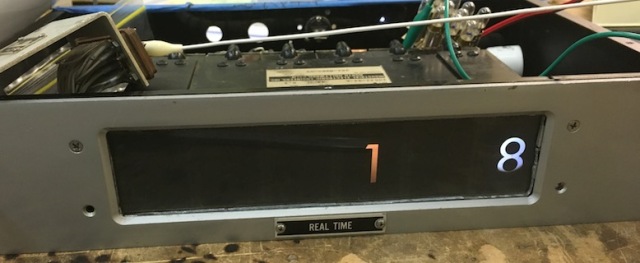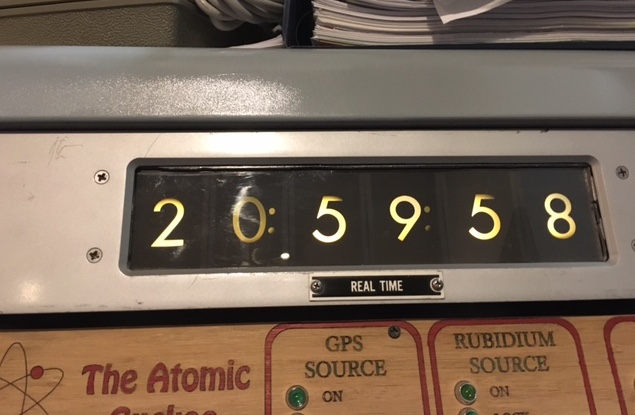I had a good find a few months ago when I picked up that rack for holding my time goodies. It’s an old bulb display unit for showing the time.
Before we had LCDs, TFTs, and even LEDs, there were very limited options for displaying information electronically. One way to do it was decatrons, but the tiny neon glow they create is impossible to read from a distance. Mechanical displays are another option, but they are noisy and unreliable.
The solution this manufacturer used, was to make a projector, using an incandescent bulb, photographic mask, projection lens, and frosted glass display:

Actually it was a bit more complicated, since each display must be able to show multiple possible digits, there were 12 bulbs, 12 masks, 12 lenses per screen.

Which, for a clock showing HH:MM:SS, means 72 light bulbs to replace.
I didn’t fancy restoring a clock only to have it blow again, so I decided to replace the bulbs with LEDs.

I played around a bit with the colour temperatures. On the left, the ‘1’ is displayed using the original bulb, on the right the ‘8’ is using a cool-white LED.
I decided that a warm colour was more in the original spirit of the clock, so I did a bulk order of warm white LEDs, and started replacing the bulbs.
In order for the projector to work well, the LED must be in the exact position of the old bulb. I lasercut some jigs to hold the LEDs in place, and glued the wooden pieces into the frame.
Afterwards I ran horizontal wires telegraph-style between the digits, and made a multiplexed setup with common-anodes for each digit.

I used an arduino with a $5 RTC module as an accurate time source, and programmed it to display on the multiplexed LEDs. (Later I’ll hook it up with the Rubidium atomic standards as the time source, but for now it’s more than adequate).
Here’s what the final result looks like:

I’m very happy with it. The crispness of the digits is something that’s almost unheard of with modern displays. Check out the points on the ‘5’, they could take your eye out.

Pingback: Unusual 72-Bulb Display Mechanism Found in Vintage Clock | Hackaday
Pingback: Unusual 72-Bulb Display Mechanism Found in Vintage Clock | BH
Pingback: 1 – Restoring an unusual vintage clock display
Pingback: Uncommon 72-Bulb Show Mechanism Present in Classic Clock | Cultismo
Great article, could you post manufacturer and part number of this rtc ?
LikeLike
Great! Awesome! A gold hand and brain
LikeLike
I need a clock like that so bad.
Can you post better pics and a video?
The font is a deadringer for a Futura Med.
Take care,
Brendaem
LikeLike
Does it have any labels at all? It’s hard to search for something like this without any specifics 🙂
LikeLike
Its called a “one plane readout” manufactured by IEE. Each display segment demands quite a high price on eBay
LikeLike